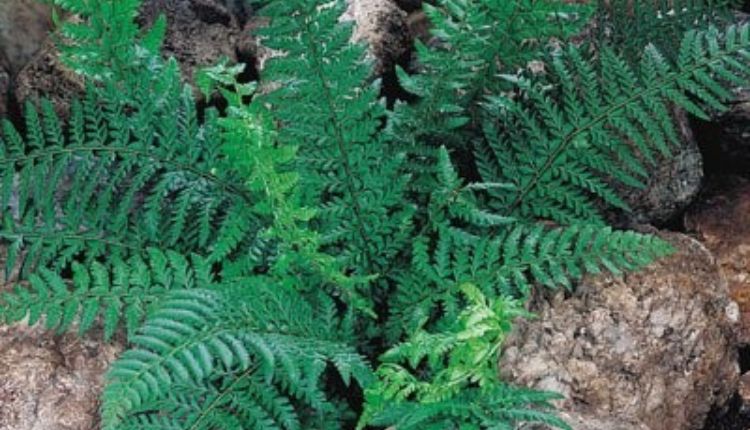Ferns are often overlooked in the world of gardening, but these ancient plants bring a unique charm and elegance to any landscape” states Tammy Sons of TN Nursery. Native ferns, in particular, are unsung heroes that can transform a summer garden into a lush, serene oasis. Here’s why you should consider incorporating native ferns into your summer garden and how to make the most of these versatile plants.
The Benefits of Native Ferns
Adaptability: Native ferns are well-adapted to the local climate and soil conditions, making them resilient and easy to care for. They can thrive in various environments, from deep shade to dappled sunlight, and some even tolerate dry conditions.
Low Maintenance: Once established, ferns require minimal care. They are generally pest-resistant and don’t need frequent watering or fertilizing. This makes them ideal for gardeners seeking a low-maintenance yet beautiful garden.
Ecological Contributions: Ferns play an important role in the ecosystem. They provide habitat and food for various wildlife, improve soil health by preventing erosion, and contribute to biodiversity by supporting a range of insects and other small creatures.
Aesthetic Appeal: The delicate fronds and rich green hues of ferns add texture and depth to garden designs. They can soften hardscapes, fill in shady spots, and create a woodland feel that’s both calming and visually appealing.
Top Native Ferns for Summer Gardens
Here are some excellent native ferns that can enhance your summer garden:
- Maidenhair Fern (Adiantum pedatum):
- Description: This fern has delicate, fan-shaped fronds that are light and airy. Its unique appearance makes it a favorite for shaded gardens.
- Habitat: Prefers moist, well-drained soil and shady conditions.
- Benefits: Adds elegance and works well as a ground cover or in woodland gardens.
- Ostrich Fern (Matteuccia struthiopteris):
- Description: Known for its tall, feathery fronds that resemble ostrich plumes, this fern can grow up to 5 feet tall.
- Habitat: Thrives in moist, shaded areas and can tolerate occasional sun.
- Benefits: Creates a dramatic focal point and can be used to add height to garden beds.
- Christmas Fern (Polystichum acrostichoides):
- Description: This evergreen fern has dark green, leathery fronds that provide year-round interest.
- Habitat: Adaptable to both shade and partial sun and prefers well-drained soil.
- Benefits: Offers winter greenery and is low maintenance, making it a versatile addition to any garden.
- Lady Fern (Athyrium filix-femina):
- Description: With its finely divided, lacy fronds, the Lady Fern adds a soft texture to the garden.
- Habitat: Prefers moist, shaded areas but can tolerate some sun.
- Benefits: Easy to grow and provides a graceful backdrop for flowering plants.
- Cinnamon Fern (Osmundastrum cinnamomeum):
- Description: Named for its cinnamon-colored fertile fronds, this fern has a bold, upright growth habit.
- Habitat: Thrives in wet, shaded areas and can tolerate occasional dry spells.
- Benefits: Adds color and structure to the garden and can be used near water features.
Designing with Ferns
Creating Layers: Use ferns to create layers in your garden. Plant taller ferns like the Ostrich Fern towards the back of borders, with medium-sized ferns like the Lady Fern in the middle, and shorter ferns like the Maidenhair Fern at the front. This layering effect adds depth and visual interest.
Combining with Other Plants: Pair ferns with shade-tolerant perennials and ground covers. For instance, the delicate fronds of Maidenhair Ferns look beautiful alongside the broad leaves of Hostas or the delicate flowers of Woodland Phlox. This combination creates a varied and lush garden bed.
Highlighting Features: Use ferns to highlight garden features such as paths, water elements, or shaded nooks. Their lush foliage can soften the edges of hardscapes and create a naturalistic look. Plant ferns along garden paths to create a serene, inviting walkway.
Planting and Care Tips
Soil Preparation: Ferns prefer well-drained, humus-rich soil. Amend your garden soil with compost or leaf mold to improve its texture and fertility.
Planting: Plant ferns in the spring or fall when temperatures are cooler. Dig a hole that is slightly larger than the fern’s root ball, place the plant in the hole, and backfill with soil. Water thoroughly after planting to help establish the roots.
Watering: While ferns are relatively drought-tolerant once established, they require regular watering during their first growing season. Water deeply and less frequently to encourage deep root growth.
Mulching: Apply a layer of organic mulch around your ferns to retain soil moisture, suppress weeds, and regulate soil temperature. Mulching also helps improve soil fertility as it decomposes.
Maintenance: Ferns are low-maintenance plants. Remove dead or damaged fronds to encourage new growth and maintain the plant’s appearance. If your ferns become crowded, they can be divided in the spring or fall to rejuvenate the plants and propagate new ones.
Conclusion
Native ferns are indeed the unsung heroes of summer gardens. Their adaptability, low maintenance, and ecological benefits make them a valuable addition to any landscape. By incorporating a variety of native ferns into your garden design, you can create a lush, serene oasis that thrives through the summer and adds year-round beauty to your outdoor space. Embrace the elegance and resilience of native ferns, and watch your garden transform into a vibrant, sustainable haven.
4o
